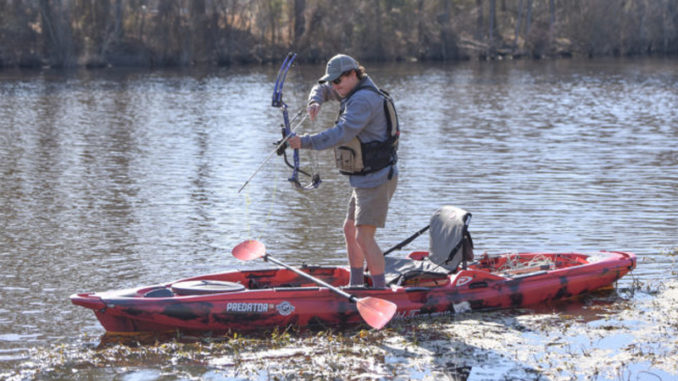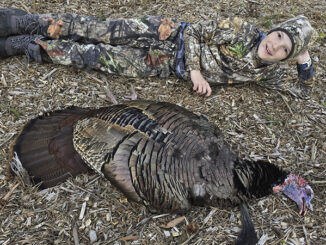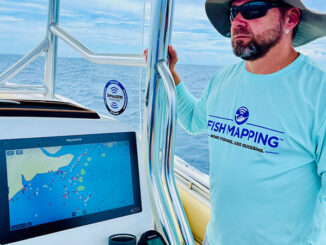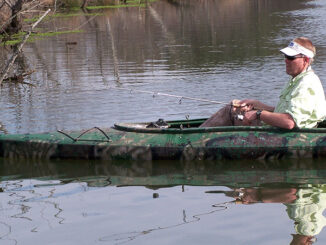
Kayaks can open up areas for bowfishing
Several years ago, I set out to target fish in a different way. I consider myself a bowhunter first and foremost, and bowfishing seems a natural progression to the sport.
For those unfamiliar, bowfishing involves searching for fish from above. And instead of casting various baits and lures, you actually try to shoot the fish with an arrow.
Complications abound in such an endeavor, however. Not only must you be proficient with a bow, in many instances, you have to shoot a moving target. You also generally do not have a sight in which to line up with the target. It is a shot from pure guess and instinct. You have to take into account water refraction and the depth of the fish. Think of how a straw looks bent through the side of a clear glass where it enters the liquid.
In centuries past, and even in current tribal areas, bowfishing consisted of shooting an arrow that was extremely long. When the arrow penetrated the fish, its length made it hard for the fish to swim and easier for the hunter to grab. Now, the arrow is attached to line that is either retrieved in a special reel attached to the bow or wrapped around a drum attached to the bow. The line attaches to the arrow on a slide that is at the front of the arrow before shooting. It slides to a stop near the nock after the arrow is launched.
I studied the sport with some of the best in the country. I hunted fish with some of the best in the nation, including record holders. Through it all, I even had the great opportunity to name a bow for the oldest bow manufacturer in the world. I also set three different North Carolina state bowfishing records that have since been broken.
Do it from a kayak
While the goals I set for myself have come to fruition, I still enjoy the sport. But as I tend to do, I try to find interesting and different ways to do things I have done before.
The stability of today’s sit-on-top kayaks has offered an opportunity to bowfish in a different fashion. It has also opened areas that were previously either unattainable or where fish would spook.
It is legal to bowfish in both freshwater and saltwater. Rules do apply differently for each, but this discussion is only about freshwater. Basically, you can bowfish for any non-gamefish in North Carolina. These species include popular targets such as carp (both grass and common), longnose gar and bowfin. Other species include suckers and catfish, although they are not as popular due to being bottom-dwelling fish for the most part. Largemouth bass and panfish are off-limits, regarding bowfishing.
Other states have different rules regarding species; for instance, Virginia identifies catfish as a gamefish So these are illegal to shoot with bowfishing equipment.
The process involves searching for the target species as it breaks the water’s surface or is just below the surface and visible from a kayak. If hunting for fish during the day, a good pair of polarized glasses is a necessity. Because it is easier to see through the surface at night with a light, bowfishing is most often done after dark.
Choose light locations wisely
I have found a light mounted on your bow — the weapon, not the kayak — works best when shooting at night. Lights can also be mounted and attached to a battery along the sides of the kayak.
Hunting for fish is something completely different from hunting land animals. The first glimpse of a carp requires a quick draw and release.
Another interesting angle for bowfishing occurs during March and April. Fish such as gar and suckers began their annual spawns and tend to pile up in groups, with many male fish surrounding a female.
These groups are easily seen from above the surface and are easier targets for anglers trying bowfishing for the first time. When a 15-pound, 5-foot longnose gar has just been shot, it is a fight you haven’t experienced with a rod and reel.
These spawns also take place in rivers and small creeks and streams near shallow rapids. Boats cannot access these areas; however a stable kayak can approach and anchor just above or below these hot spots, allowing a new approach to fishing.




Be the first to comment